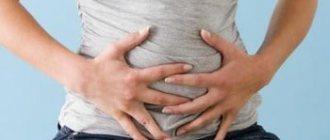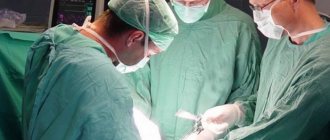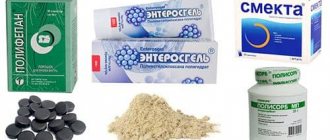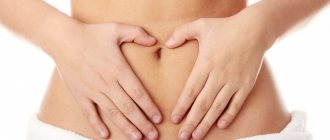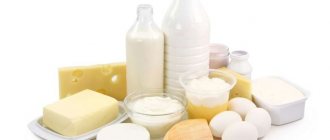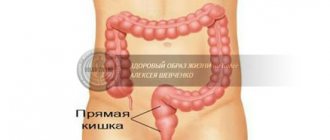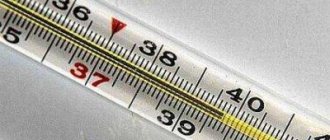Failure to comply with the principles of proper nutrition, bad habits, physical and emotional stress, as well as some genetic factors lead to the development of peptic ulcer disease. A serious illness can be diagnosed at any age, but the main risk group is middle-aged men. In representatives of the fair half of humanity, this chronic pathology is detected less frequently. This is explained by the fact that the female hormone estrogen reduces the secretory activity of the gastric glands.
If you fail to contact a gastroenterologist in a timely manner or fail to follow his instructions, the risk of a serious complication of the disease – a perforated (perforated) ulcer – increases. The reason for its development is the so-called increased acidity. The increased concentration of hydrochloric acid corrodes the mucous membrane of the stomach and duodenum. As a result, a through hole appears in their walls - a perforation.
The resulting defect in the internal organs is eliminated surgically. Otherwise, the patient will develop an infectious inflammation of the peritoneum, which can, in turn, lead to death. After surgery, along with supportive therapy, patients are prescribed a specific diet. Diet for a perforated stomach ulcer is an important condition for recovery and prevention of relapse.
Why is diet so important after duodenal surgery?
It is worth noting that diet is important not only after surgery, but also in the case of conventional drug treatment.
By changing your diet, a person can protect himself from all kinds of pathologies of the stomach and intestines. Gastric resection is an operation that involves complete or partial removal of an organ, which brings quite a lot of stress to the body. Dietary nutrition after a removed ulcer can alleviate the patient’s serious condition and contribute to the restoration of the affected mucous membranes. The menu is designed in such a way as to avoid excessive stress on the reduced organ, therefore the size of the standard portion changes significantly.
You should be prepared for the fact that at first the diet will seem as strict as possible, but this is a necessary measure for rehabilitation. Only your doctor can tell you what your meals should be. However, in any case, for a couple of days after the operation, a person cannot take any food, since peristalsis has not yet gone through the recovery period and the stomach is not able to perform standard functions. Starting from day 3, the patient is fed orally using a tube. The main food is protein mixtures and herbal weak drinks.
You can start eating food in the traditional sense from the fourth day after surgery. The choice of a particular product must be approved by a doctor so as not to lead to intestinal disorders.
You should consult your doctor regarding permitted foods.
This surgery can cause a number of complications. These include: resumption of peptic ulcer disease, hypoglycemia (accelerated burning of glucose and energy starvation of the body), reflux gastritis (reflux of the contents of the duodenum into the stomach). Similar conditions can occur if the postoperative regimen is not followed.
Table No. 0 A
This diet therapy is prescribed on the fifth day after surgical manipulation of a perforated gastric ulcer, provided that peristalsis has returned to normal. If the functions of the gastrointestinal tract have not been restored, continue the course of IV drips. The duration of diet table No. 0 A after surgery for a perforated gastric and duodenal ulcer is from two to five days, depending on the patient’s health condition. Doctors recommend bed rest and avoidance of stressful situations.
Nutritional value of the diet table:
- ten grams of protein;
- fifteen grams of fat;
- no more than two hundred grams of carbohydrates.
Main products of Table No. 0A:
- oatmeal, semolina, rice porridge boiled to a slimy form with the addition of cream;
- weak, not rich chicken or turkey broth;
- pear and pumpkin jelly;
- rosehip decoction.
Sample menu for the period of Table No. 0A
In the first days of eating, it is important to follow the doctor’s instructions and diet. If you eat prohibited foods, inflammation may develop, the walls of the gastrointestinal tract will be irritated, and complications are possible.
It is allowed to eat only liquid dishes in small portions from six to eight times a day, two hundred grams per meal. They are guided by a sample menu after surgery for a perforated ulcer, but look at the patient’s well-being. If any of the products cause pain, bloating or discomfort, they are temporarily discontinued.
Menu for the first day
For breakfast, cook oatmeal in water or with the addition of a teaspoon of cream. It is allowed to drink rosehip decoction. The porridge is boiled to a mucus-like liquid state, and the cereal is ground before cooking.
For second breakfast, a weak pear jelly is prepared. Wash it down with weak sweet tea (half a glass).
Snack before lunch - dried fruit compote.
For lunch, prepare a weak chicken breast broth. Supplement with rosehip decoction (no more than half a glass).
For the second lunch, prepare jelly from berries.
For an afternoon snack, rice porridge is boiled until liquid (white rice is ground before cooking). Wash it down with half a glass of sweet, weak tea.
For dinner, prepare a weak veal broth.
Second day diet
For the first breakfast, boil liquid semolina porridge without milk. As a drink - weak sweet tea.
For second breakfast, veal broth is prepared. Take half a glass of rosehip decoction.
https://youtu.be/5_PoqpHyF78
Diet duration
01.03.2017
To maintain such a table, you need a good diet, which involves limiting foods that stimulate secretion in the stomach and duodenum, irritate the mucous membrane and are difficult to digest. Products should be served pureed and boiled. It is allowed to eat fish and lean, tender meat.
For breakfast they prepare a soft-boiled egg, rice with milk, and tea. Lunch: baked apple with added sugar. For lunch, you can make cauliflower soup, boil chicken and potatoes, and prepare fruit mousse. For afternoon tea, a decoction of rose hips and crackers are served. For dinner, fish is boiled and baked, mashed potatoes and tea are made. Before going to bed, it is recommended to eat non-acidic milk yogurt.
The cooking process can be seen in videos published on the Internet.
- Rice cooked in milk. 50 grams of rice are poured into boiling water and cooked until thickened, then heated milk (about 100 milliliters), salt, sugar are added and mixed. Cook over medium heat and avoid boiling too much. The porridge is served with butter (no more than 5 grams).
- Boiled chicken meat. 100 grams of meat, 10 grams of chopped carrots and 5 grams of parsley root are poured with water, brought to a boil, then the foam is removed and the broth is salted. Cooking lasts an hour. After cooking, the meat is cooled, cut into pieces, and herbs (dill or parsley) are added.
- Boiled potatoes with dill. 250 grams of potatoes are placed in boiling water, salted and boiled. Afterwards the water is drained and the potatoes are served sprinkled with herbs and watered with salt. oil
- Boiled cod meat. 120 grams of fish are cut into pieces, placed in a pan and filled with water. After boiling, you need to remove the foam. Then add finely chopped carrots and parsley (5 grams each), and add salt. Cook for 15 minutes. Add butter to the finished dish.
Neglecting the advice of doctors in the postoperative period often leads to relapse of the disease. To prevent it, it is important to accept the fact that after suturing the perforation, adherence to a diet is indicated throughout life. The food basket of a person who has experienced an exacerbation is not too large, but consuming these products will help achieve a stable remission. The diet plan for a perforated ulcer includes:
- Thoroughly boiled or ground porridge (semolina, rice, buckwheat, pearl barley). The first time after surgery, cereals are cooked in water. After recovery, you can flavor them with a small amount of butter and milk;
- Dietary meats, steamed, oven-baked or boiled in water. Preference should be given to chicken and rabbit meat;
- Low-fat fish: pollock, hake, cod, flounder, perch, pike perch, lemonema, navaga, haddock, blue whiting, pollock. As with preparing meat, frying is prohibited;
- Vegetable soups. Before serving, they need to be ground in a blender or rubbed through a sieve;
- White bread made from premium flour. It is advisable that it be dried or from yesterday. Pies, crackers and rolls are allowed only if they are made from soft dough;
- Sweet ripe berries and fruits without peel, in grated form. It is best to prepare soufflés, mousses, jellies and puddings from them;
- Milk, kefir, sour cream, cottage cheese. When purchasing, you need to choose low-fat and not very acidic products. Also allowed are milk pudding, soufflé and jelly, lazy dumplings, oven-baked cheesecakes;
- Soft-boiled eggs, steamed omelet in the microwave or slow cooker. In addition, poached eggs can be considered dietary dishes;
- Weak green tea, a decoction of chamomile, linden, currant or raspberry leaves, anise seeds, sweet fruit compote. Natural juice can be prepared from carrots, cabbage, banana, celery, and melon.
During the two postoperative months, the patient must adhere to a strict diet. Compliance with all medical rules and recommendations will avoid relapse of the disease and the development of the inflammatory process. For a speedy recovery, adhere to the principles of a healthy diet.
After surgery to remove a stomach ulcer, the patient must remember the rules to restore his condition:
- Not to starve. Abstinence from food for medicinal purposes is permissible only for the first three days after the intervention. You need to eat at least 6 times a day in small portions. The optimal weight of one is 200 g.
- You can only eat home-cooked food. This means that industrial sweets, sausages, cheeses, canned food and sugary soda are completely removed from the diet.
- Spicy dishes and marinades pose a danger to the mucous membrane, irritating it. Even garlic, which is so beneficial for the body, should be excluded from the menu, since it is a natural irritant and also provokes the release of acids. Restrictions also apply to table salt, which is better replaced with sea salt.
- Eating after surgery involves grinding solid food into a puree. For example, boiled vegetables can be blended using a blender.
- Doctors prohibit cooking food with added oil or animal fats to avoid complications. In general, after gastric surgery, the diet should consist of steamed or oven-cooked dishes that do not cause irritation of the mucous membrane.
- Observe temperature conditions. Do not allow foods that are too hot or cold, as a sharp change will negatively affect the condition of your epigastrium.
Doctors will provide you with a complete list of products for consumption in the postoperative period.
What is allowed
After gastric surgery, the patient is prescribed a strict diet, which he must follow for at least a year. You can try any of your favorite treats only starting from the second postoperative year.
So, doctors allow the following products:
- omelet and steamed eggs;
- dietary meat (turkey, chicken and beef);
- low-fat dairy products;
- vegetables (potatoes, pumpkin, carrots, zucchini);
- fruits (apples, pears, bananas);
- cereals (oatmeal, rice, buckwheat, pasta).
A menu that includes this food will give the patient strength and energy for a speedy recovery.
What is prohibited
During the period after perforation, the patient should not consume a number of foods that will negatively affect his condition and create discomfort in the stomach and intestines. The list of prohibited foods includes:
- bakery products, muffins;
- legumes;
- any sauces;
- sweets, nuts and seeds;
- preservation, marinades;
- seasonings, spices;
- semi-finished products;
- fried and fatty foods.
Peptic ulcers completely exclude products that contain cocoa.
Also during the recovery period, and in later life, you should give up smoking and other bad habits.
The purpose of dietary nutrition in the postoperative period is to reduce the load on the gastric mucosa. To allow the epithelium to recover, food must be very soft and easy to digest.
The products used in the menu are selected so as to exclude any aggressive chemical or physical effects on the walls of the stomach.
Also, they should not provoke increased secretion of hydrochloric acid, which leads to the formation of ulcers. In addition, thermal effects on the inner surface of the stomach should be avoided, as this also irritates the mucous membrane. These conditions are due to the following factors:
- hypersensitivity of the mucous layer, which was subjected to aggressive influence during surgery;
- severe form of the inflammatory process that occurs with peptic ulcer;
- weakness of the whole body in the postoperative period.
Due to these factors, the patient’s diet should be as gentle as possible. In addition, you need to follow a special diet and a healthy lifestyle. Not only the diet, but also the principle of food intake is subject to correction. It is necessary to stop smoking and drinking alcoholic beverages.
In addition, it is prohibited to consume various carbonated drinks and drinks containing chemicals. This leads to irritation of the stomach walls and aggravation of the patient’s serious condition. Strong tea and coffee containing caffeine enhance the functioning of the secretory gland. As a result, hydrochloric acid is released, which has a detrimental effect on the mucous layer of the digestive organ. Therefore, these drinks are also removed from the patient’s diet.
The diet for a perforated gastric ulcer is carried out taking into account the following rules:
- The patient's meals are divided (meals 6 times a day);
- food is divided into small portions, it is advisable to eat one dish at a time;
- You should not overeat or drink too much liquid, as this stretches the walls of the stomach and creates additional mechanical stress;
- The temperature of the food should be warm. Hot and cold food negatively affects the stomach;
- Food must be chewed well; food should not be swallowed in chunks.
The diet helps restore microflora.
With the help of diet, it is possible to reduce the load on the gastrointestinal mucosa. In order for the epithelium to recover faster, the patient will need to eat soft food that is easily digested. It is important to exclude foods that have aggressive effects on the walls of the gastrointestinal tract. In addition, products should not contribute to an increase in the secretion of acid, which provokes the occurrence of pathology.
The attending physician adjusts not only the patient’s diet, but also the conditions for consuming food. You will need to eat small portions at least 5 times a day. It is imperative to stop drinking alcohol and smoking. This is due to the fact that alcohol burns the mucous membrane, which causes severe pain.
If we talk about the harmful substances that are in cigarettes, they also irritate the walls of the digestive tract. Because of this, serious consequences often occur after surgery. Treatment prohibits the consumption of carbonated drinks, as well as strong tea and coffee.
What is prohibited
Basic nutrition rules
- After the operation, it is necessary to chew food thoroughly, achieving normalization of gastric and intestinal motility and peristaltic movements.
- After the body has partially adapted to the consequences of the operation, you will need to drink more liquid per day. Water should not contain gases; weak tea and juices diluted with water to reduce concentration are indicated.
- Recommendations for proper nutrition will have to be followed until complete recovery.
- Food products should be easily digestible. Vegetables that do not contain coarse fiber and fruits are allowed to be included in the list.
- For nutrition after surgery, semolina, rice, carrots, zucchini, potatoes, squash, low-fat varieties of yogurt without dried fruits and berries are suitable. Boiled chicken eggs will not harm you. Salt in food is minimal.
Cooking methods
Products are prepared steamed or boiled. A balanced diet containing vitamins, proteins, minerals and trace elements is assumed.
How to eat
The drink will strengthen the immune system.
After 5 days have passed after surgery, a person can drink small amounts of drinks. With their help, it is possible to improve the functioning of the digestive organs and strengthen the immune system. It is recommended to make a decoction of rose hips, to which you can add a little honey.
10 days after surgery for a perforated gastric ulcer, the menu includes some dishes that improve the activity of the gastrointestinal tract. It is acceptable to eat vegetable puree soups, viscous porridges, steamed protein omelettes, and steamed cutlets made from lean meats. The patient will need to follow this diet for at least 30 days.
What can and cannot be eaten after surgery for a perforated gastric ulcer, what diet is ahead?
A perforated ulcer is a serious disease. Postoperative recovery is a rather difficult period for the patient. In order for a person to quickly regain shape, he needs long-term treatment with medications, bed rest, and a special diet. It is diet that is the fundamental factor during the recovery period.
All food eaten must be pureed. Do not allow coarse or large pieces to enter the stomach - they injure the unhealed mucous membrane and can provoke unpleasant complications. In addition, after such stress, the gastrointestinal tract is not yet able to fully digest food.
Particular attention should be paid to the regime. Eating at the same time will help the body prepare for this process in time and produce the proper amount of gastric juice. The patient, taking into account individual characteristics and the time of awakening/going to bed, must draw up a meal schedule and follow it strictly. The intervals should be no more than two hours.
Thus, the patient will eat approximately 7 times a day. Ideally, distribute the diet, leaving the most easily digestible foods for the evening. The last meal should occur no later than two hours before going to bed.
What portions should be:
- on the second day you can drink no more than 150 ml of water, 10 ml several times a day. With each subsequent day, the amount of fluid consumed should be increased by 150 ml;
- on the third day you can eat 500 ml of food in fractions. The norm for days 4–5 is to increase the volume eaten to 800 ml - 1 liter.
So gradually the patient should reach the norm of consumption.
Postoperative dietary regimen
The patient’s diet after removal of a stomach and duodenal ulcer is as light as possible, since the body is weakened by a long-term inflammatory process and the surgery. Goals pursued for recovery:
- reducing the load on the gastrointestinal tract;
- regeneration of normal intestinal microflora;
- saturating the body with useful substances.
The first couple of days after surgery, doctors prohibit eating any food. At this time, normal life activity is ensured by introducing nutrient solutions from droppers into the body.
General nutrition rules
After three days, it is allowed to include jelly and herbal decoctions in the diet, but only in small quantities.
6 days after surgery to remove an ulcer, the menu can be diluted with weak vegetable-based soups, liquid foods, steamed omelettes and pre-mashed rice porridge. After a week, it is permissible to introduce vegetable purees and steamed chicken cutlets into the diet. You need to add more food as the patient recovers.
It is known that in case of a stomach ulcer, the patient is prescribed a special diet that completely excludes fried, fatty and spicy foods. Salt and spices are also limited - their quantity is minimal. After surgery, gastroenterologists recommend continuing to adhere to the principles of such nutrition. All dishes must be cooked in a steamer or oven.
The diet after gastric surgery is as gentle as possible. For the first two days of rehabilitation, eating is not allowed at all; the patient is prescribed therapeutic fasting. Starting from the third day, you can introduce liquid dishes into the diet, but in very small quantities. A perforated gastric ulcer is a dangerous disease that affects the gastrointestinal tract. For this reason, doctors monitor the patient’s well-being after each meal.
Don't create your own diet. The diet menu must be provided to you by your attending physician.
What natural remedies will speed up recovery?
In addition to following a diet for stomach ulcers, it is also necessary to continue treatment of this disease. In this case, it is not at all necessary to take any medications.
Perforated gastric ulcer is most often diagnosed in young people aged 20 to 45 years. The female body is less susceptible to this complication, since the hormone estrogen reduces the production of secretory glands.
This disease is characterized by the appearance of perforation in the wall of the stomach or duodenum, which leads to the effusion of contents into the abdominal cavity. If help is not provided in a timely manner, peritonitis develops and death occurs within a few days.
Sample menu for the period of Table No. 1 B
Diet according to Table No. 1 B after surgery for a perforated gastric ulcer begins in the hospital and continues at home for two to four months. If you feel well and have normal functioning of the digestive organs, the diet is changed to table No. 1. All food at this stage is served pureed, steamed, stewed, baked.
First day menu
For breakfast, cook rice porridge in milk, wash it down with rosehip juice.
For the second breakfast, make pear jelly and one white bread cracker.
For lunch they cook puree soup from chicken breast, potatoes, and carrots. For dessert, tea with honey.
For an afternoon snack, an apple is baked in the oven, and the drink is an infusion of rose hips.
For dinner, steamed cutlets are made from halibut, and milk jelly for dessert.
For the second dinner, a glass of kefir.
Second day menu
For the first morning meal, prepare a steam omelette from two eggs and milk, and for dessert - pear jelly.
For a snack, mix yogurt with a baked apple and a teaspoon of honey.
For a lunch meal, prepare a turkey soufflé, boiled beet puree as a side dish, and half a glass of rosehip infusion for dessert.
For the second snack, boil milk buckwheat porridge with one white cracker.
For an evening meal, prepare a steamed veal cutlet, side dish - stewed grated carrots, a glass of tea.
Third day menu
For the first breakfast, milk semolina porridge with butter is cooked, and for dessert, dried fruit compote.
Second breakfast: 1 baked apple and cottage cheese mashed with cream.
For lunch, cook puree soup from turkey, carrots, and potatoes. For dessert, milk jelly.
For an afternoon snack, serve kefir and one white cracker, one soft-boiled egg.
For dinner, pollock is baked in the oven and served with steamed cauliflower. Morse.
You can have a glass of yogurt as a snack before bed.
Treatment of perforation
In emergency situations (perforation, bleeding), the question is about the life and death of the patient, and here there is usually no doubt about the choice of treatment.
When it comes to planned resection, the decision must be very balanced and thoughtful. If there is even the slightest opportunity to manage the patient conservatively, this opportunity should be used. The operation can get rid of the ulcer forever, but it adds other problems (quite often manifestations occur, designated as operated stomach syndrome).
The patient should be informed as much as possible about both the consequences of the operation and the consequences of not taking surgical measures.
Conservative therapy is characterized by low effectiveness, therefore, most often, after confirmation of the diagnosis, the patient is prepared for emergency surgery.
If the patient does not sign an agreement for the operation, then, using the Taylor method, measures are taken to maintain the functioning of the body and remove exudate from the abdominal cavity.
For this:
- First, sounding is carried out, eliminating gastric juice and undigested food residues.
- Next, a device for aspiration is connected, this allows you to maintain the correct balance of fluid in the body and nutrition of the cells.
- After this, antibiotics are required to eliminate the infection.
This treatment can last up to 10 days, after which a contrast agent is administered for X-ray assessment of the condition and the probe is removed. The Taylor method cannot guarantee a complete cure for the patient, since there is a high probability of the formation of abscesses, which can be fatal.
Before the operation is performed, the patient is pre-prepared for the procedure. To do this, they diagnose the patient’s condition, clear the abdominal cavity of contents - exudate and food, and, if necessary, take measures to normalize pressure.
In medical practice, three types of operations are used:
- Suturing. This method allows you to save all organs; manipulation can be performed in the presence of peritonitis, if no more than 12 hours have passed from the onset of perforation. At a young age, the procedure is recommended for patients with rapid progression of the process, without preliminary signs indicating that an ulcer is developing. In older people, this manipulation is performed in severe conditions. The suturing method involves excision of the ulcer along the edge of the perforation, followed by suturing in the transverse direction to prevent narrowing of the lumen and suturing the omentum. After the operation, an antiseptic drug is used to re-treat the cavity and drainage is installed.
- Resection. In this case, part of the affected organ is excised. Indications for manipulation are the large size of the ulcer, the presence of tumors, inflammation or purulent peritonitis.
- Excision with vagotomy using endoscopy and laparoscopy. The method is based on excision of the ulcer with ligation of the vagus nerve, which reduces gastric secretion. The procedure is indicated for patients with a minimal number of inflammatory foci and in the absence of peritonitis. Laparoscopic suturing can be combined with preliminary vagotomy.
In case of perforation, urgent hospitalization of the patient is necessary. The use of traditional methods of treating ulcers is advisable only until perforation appears.
General information
The phenomenon of a perforated ulcer means the formation of a through hole in the stomach or duodenum. Their contents leak from the hole into the abdominal cavity, causing serious damage to the internal organs.
Thus, the phenomenon is dangerous not only as serious damage to the digestive organs, but also extremely dangerous due to the consequences of the leakage of their contents into the abdominal space. Therefore, it is very important to eliminate the perforation as soon as possible.
To do this, using diagnostic methods, you need to make sure that there is a perforation. Next, a method of surgical intervention is selected, an operation to suturing the hole is immediately performed, followed by postoperative therapy.
Further recovery depends on the patient. This is a limitation of physical activity, especially at first; the emotional state also matters. The main thing for a perforated gastric ulcer is the diet after surgery and the diet.
Recovery takes a long time, so it will take a correspondingly long time to adhere to the nutritional rules. In difficult cases, restrictions remain for life. Also, you will have to give up alcohol and smoking.
Complications after perforation of an ulcer
If you ignore the presence of a problem or provide assistance untimely, the patient will be doomed to death. If the operation is performed several hours after the perforation occurs, the patient’s chances of a full recovery are very high.
Complications after surgery may occur due to incomplete cleaning of the abdominal cavity from the contents or lack of proper qualifications of the surgeon performing the procedure.
The patient may encounter the following problems:
- The appearance of peritonitis. Usually the cause is poor cleaning of the abdominal cavity.
- Leakage of intestinal contents into the peritoneum. This phenomenon is typical for poor-quality seams.
- Violation of the passage of gastrointestinal contents in the intestine. A complication indicates intestinal paresis or a violation of the technical performance of the operation.
- Bronchopneumonia. The condition is typical for people with reduced immunity, and the characteristic lying position of the patient is also the cause.
Perforation of the ulcer is more typical for young patients. In this case, the walls of the stomach have a perforation through which all the contents enter the stomach.
If assistance is not provided in a timely manner, peritonitis develops 11-36 hours after perforation. Rotting food and stomach acid rapidly destroy all the internal organs of the peritoneum.
Death occurs within 2-3 days. That is why you should consult a doctor in a timely manner and, if necessary, undergo emergency surgery.
Dietary table No. 1
At this stage of the patient’s recovery after surgery, the diet is expanded, fruits, vegetables, and cheeses are added.
The forbidden menu remains:
- seasonings;
- spicy;
- fried or baked until crusty;
- any alcoholic drinks;
- sour fruits;
- marinades;
- baked goods;
- carbonated drinks;
- coarse vegetables (white cabbage, radish, onion, sorrel);
- smoked and canned;
- fat;
- coarse cereals (barley, corn);
- rough meat with fibers;
- ice cream;
- chocolate products;
- fried or hard-boiled eggs.
List of dishes on the first day of the diet
For breakfast they make cottage cheese casserole with pears, sweet tea, and a piece of mild cheese.
For a snack, fruit jelly is made from apples.
For lunch, chicken breast soup with potatoes and carrots, rosehip infusion and white crackers are allowed.
For an afternoon snack, prepare a steam omelette with milk.
For dinner, steamed pollock cutlet and stewed zucchini.
Diet for the second day
Milk soup with noodles, dried fruit compote.
For second breakfast, boil a soft-boiled egg and yogurt.
For lunch, buckwheat porridge, steamed turkey cutlet, tea.
For an afternoon snack, a glass of kefir with one cracker is suitable.
For dinner, cook milk soup from cereals, baked apple.
Healthy recipes
The ulcer diet menu cannot be called monotonous. Even when treating such a disease, you can eat really tasty and at the same time healthy dishes.
Here are some simple recipes for every day:
- Turkey aspic. Boil the meat, cool it. Remove the skin and cut into small slices. Boil the carrots. At this time, pour gelatin with water in a ratio of approximately 1 to 8 and let it brew for 30 minutes. Add the soaked gelatin to the boiling carrot broth, add salt to your taste. Afterwards, the broth is filtered, chopped parsley, turkey and boiled carrots are added to it. Let it sit in the refrigerator for several hours.
- Pike perch in Polish. Boil the cleaned fish with carrots and parsley. Serve with a side dish of buckwheat, rice or mashed potatoes.
No matter how strict the diet, you can always find interesting recipes for truly tasty and at the same time healthy dishes. Take care of yourself and your health!
Vegetable salad
Beets are a storehouse of nutrients and a low-calorie product.
You will need to take 1 potato and a quarter of beets. Rinse the vegetables thoroughly and boil. Then cool and peel. Cut into small strips and add a little salt. Season with a small amount of olive or vegetable oil and stir. Serve with finely chopped greens.
Significant dietary restrictions are introduced for the patient, but this does not mean that the patient’s diet will become significantly poorer. There are many options for preparing dishes that are not only distinguished by their usefulness, but also by their pleasant taste.
The patient is recommended to eat crushed foods, such as puree soup. Ingredients required:
- a small bunch of greens (dill, parsley);
- medium-sized carrots - 2 pcs.;
- zucchini - 2 pcs.;
- potatoes - 4 pcs.
The puree soup is easy to prepare and beneficial for the patient
Steps for preparing puree soup:
- Peel and chop the vegetables.
- Boil food in salted water until done.
- Remove the ingredients, do not discard the broth.
- Grind the vegetables until smooth using a blender, gradually adding a little broth.
- Add (optional) a little butter and garnish with chopped herbs.
Pumpkin pudding will be an excellent addition to the patient’s diet. Components required:
- low-fat milk - 20 g;
- apples - 140 g;
- pumpkin pulp - 150 g;
- honey - 10 g;
- semolina - 10 g;
- chicken eggs - 2 pcs.
Cooking:
- Mix the pumpkin pulp and chopped apples using a blender, then simmer for 15 minutes over low heat.
- Add milk and semolina to the mixture and place on low heat.
- Bring the dish to a boil.
- Beat the eggs, then add them along with the honey to the apple-pumpkin mixture.
Pumpkin pudding is a delicious dessert that fits perfectly into a patient’s diet.
The final step is to cook the dish in a slow cooker or steam for 30–40 minutes.
Sample menu for the period of Table No. 0B
The nutritional value of the dietary table for fats and proteins is increased to fifty grams per day. It is allowed to introduce salt up to four grams and carbohydrates no more than 300 grams. At this stage of diet therapy, when restoring the functioning of the stomach after surgery on an ulcer, you can eat food pureed to puree, lean varieties of meat and fish, and eggs are introduced. The duration of diet therapy is at the discretion of the doctor from two to four days, depending on the patient’s health condition. During the period of rehabilitation and restoration of mucous membranes after surgery with complications of a stomach ulcer according to Table No. 0B, the serving size is no more than 250 grams. Milk is rarely included during this period due to the risk of developing bloating and flatulence.
Meal plan for the first day
For breakfast, steam an omelet without milk. The drink is a compote of dried fruits.
For a snack, prepare liquid dairy-free rice porridge.
Before lunch, pear jelly is cooked.
For lunch, boiled chicken breast is ground to a puree. For dessert, sweet tea.
For the second lunch, boil one egg soft-boiled. The drink is a rosehip decoction.
For an afternoon snack, cook dairy-free liquid oatmeal.
For dinner, boiled pollock is ground to a puree. Drinks include tea.
Second day menu
For breakfast they cook semolina porridge without milk and pear compote.
Pear jelly is prepared for a snack.
For the second snack, you can boil one soft-boiled egg and wash it down with sweet tea.
For lunch, broth is made from turkey breast, which is then pureed. You can wash it down with dried fruit compote.
For an afternoon snack, prepare an omelette from one steamed egg.
For dinner they cook apple jelly.
Authorized Products
The diet after gastric ulcer surgery includes the use of:
- Soups made with vegetable broth or weak meat broth (exclude cabbage soup, okroshka and borscht). In soups, cereals are well boiled and vegetables are finely chopped. As before, to improve the taste, they add an egg-milk mixture, cream or butter.
- Dried wheat bread.
- Lean meat (beef, lamb, turkey, chicken) in the form of chopped, steamed products (meatballs, cutlets, pates, meatballs). Soft meat and boiled tongue can be eaten in pieces.
- Lean fish, chopped or in pieces, with the skin removed. You can eat jellied fish, but use vegetable broth for pouring.
- Milk, cream (in dishes), cottage cheese, non-acidic curdled milk and kefir. The choice of cottage cheese dishes is expanding - casseroles and lazy dumplings.
- Semolina, buckwheat and rice porridges are well boiled and have a semi-viscous consistency. They are prepared with water and the addition of milk.
- Butter and vegetable oil for prepared dishes.
- Mashed potatoes and puddings from potatoes, carrots, cauliflower and beets.
- Weak tea with milk, sweet fruit juices, jelly.
- Fruits only in heat-treated form (jelly, baked and pureed), compotes with pureed fruit.
The postoperative period is very important for the patient. At this time, you need to follow all medical recommendations to avoid complications. Recovery after gastric surgery is based on a special diet, which is aimed at a quick recovery. Today we will look at what you are allowed to eat after gastric ulcer surgery.
Recommendations from gastroenterologists also boil down to the frequency of food intake and its quantity. You need to eat every 2 hours and in small portions. Monitor the temperature of the food; if you have an ulcer, it should be at room temperature. Gentle nutrition is recommended not only during the rehabilitation period, but also in later life.
Diet therapy
The correct menu prescribed to a patient by a gastroenterologist or nutritionist after gastric surgery has become the basis for diet therapy, a direction of complex treatment consisting of successive stages. Only the attending physician will explain to the patient what is allowed to be consumed during the specified period, and what foods are acceptable during subsequent periods of rehabilitation.
First stage
On the first day after surgery, the patient should be on a fasting diet. On the second day, the diet should be gentle. The attending physician monitors the patient's health status, determining a list of permitted products.
Gradually, the patient's diet expands. This will take up to two weeks. The postoperative diet requires extremely serious consideration. During this period, dishes are served to the patient pureed.
Further nutrition of the patient
After a couple of months, the patient switches to unprocessed food, but the dietary list of products must be strictly observed for a long time. If the processes of rehabilitation of the patient’s stomach and intestines after surgery proceed favorably, after a year it is allowed to expand the menu.
Puréed food and a diet based on a similar principle help relieve pain and reduce signs of inflammation in the stomach after surgery. Thanks to this circumstance, digestion is normalized and proper peristalsis of the stomach and intestines is restored.
In order for dietary nutrition to have a beneficial effect on the patient’s condition, food must be boiled or steamed. Glucose and other carbohydrates, and table salt are allowed in the diet in minimal quantities. It is allowed to prepare vegetables for the patient's nutrition, with the exception of white cabbage and cauliflower.
To feed the patient, the menu includes broths from lean chicken meat, boiled lean veal, beef, with cartilage, veins and films removed before cooking. Low-fat fish, boiled and baked, is recommended for use. Chicken eggs are eaten soft-boiled. White bread is only allowed yesterday; fresh baked goods are not allowed. To improve the taste and nutritional properties, it is permissible to add a little sour cream to dishes.
After three months, zucchini, kefir, carrots, pumpkin, and potatoes are gradually added to the food menu of a person who has undergone surgery. In the long term, unsalted cheese is gradually introduced into the diet in minimal quantities. Fresh fruits are not recommended for consumption. They are used to make jelly or mousse, not too sweet. It is allowed to drink weak sweet tea and juices, excluding grape juice.
Last stage of therapy
In the long term after gastric ulcer surgery, the diet consists of gentle foods. They begin to prepare the dishes without being pureed. The diet must include essential microelements, proteins, vitamins and carbohydrates.
Carbohydrates in the diet should be predominantly complex, simple ones will need to be reduced to a minimum amount. It is permissible to steam, boil, bake in the oven or microwave, or simmer over low heat.
The first courses, in addition to soups, are represented in the ulcer diet with borscht, and cabbage soup is gradually introduced. Once a week, soup or borscht cooked in meat broth is allowed. The diet includes white, gray and black bread, dryish cookies, boiled chicken and low-fat fish.
Now it is permissible to introduce raw vegetables into the diet in modest quantities, and prepare fresh vegetable salads in sunflower oil with herbs. It is allowed to eat fermented milk products, rice, buckwheat or oatmeal. Occasionally allow the patient as a delicacy sausage, sausages, low-fat ham, black or red caviar, mild varieties of cheese.
Butter rolls are prohibited in the diet; avoid pates, liver, pickles and marinades, canned foods, chocolate, mushrooms, radishes and radishes. Coffee and ice cream will have to be completely eliminated.
Alcohol when diagnosed with a perforated operated ulcer is strictly prohibited. Too sweet tea and milk will have to be limited. It is better to expand the diet gradually; after a year, you are allowed to switch to a normal diet.
If a patient diagnosed with a perforated stomach ulcer has concomitant symptoms of other stomach or intestinal diseases, for example, constipation, an abundance of plant foods containing pectins and fiber are introduced into the diet.
If surgery is performed for a malignant gastric ulcer, the maximum amount of nutrients that help inhibit the growth of cancer cells is introduced into the diet. This is buckwheat, vegetable oil. At the same time, a course of herbal medicine is carried out. Such treatment will have a healing effect on the gastrointestinal tract, will allow you to expand the dietary table in a short time, and diversify the patient’s diet.
What is prohibited?
If before the operation half of a person’s menu consisted of junk food, then the restrictions for him will be significant. The following are strictly not welcome:
- mayonnaise, ketchup, sauces;
- fast food;
- baked goods, fresh baked goods;
- alcohol, soda, coffee, strong tea;
- unhealthy snacks - crackers, nuts, chips and even seeds;
- fresh onions, garlic;
- citrus;
- sausages, lard;
- chocolate, ice cream, sweets;
- smoked meats, pickles.
You need to be careful with juices and cocoa. It is better to give preference to medicinal table mineral water without gas.
Among vegetables during the postoperative diet, doctors do not recommend fresh cabbage, legumes, sorrel, tomatoes, cucumbers, mushrooms - but sometimes they make exceptions in some cases.
Refusal of this number of products will not only speed up the rehabilitation of the stomach, but will also improve the condition of the body as a whole and strengthen the body’s defenses.
